In the late spring of 2020, the City of Greer completed CenterG — a $10-million streetscape project that has transformed Trade Street into a pedestrian-friendly, aesthetically pleasing and economically thriving central business district.
The project was a far cry from what the city had originally discussed years earlier. Business activity was already strong downtown, with several restaurants located on the main thoroughfare. The project began, Greer Mayor Rick Danner said, as a simple reworking of the streetscape — “maybe find some places to punch out the sidewalk to accommodate some tables and redo the street with fresh asphalt. Maybe add some street lighting.”
A look at Greer’s downtown today shows what can happen when cities involve community stakeholders and pursue opportunities they believe will pay off. It’s an example of how cities and towns around South Carolina can use streetscaping, lighting and additional parking to improve the economic health of downtowns and the quality of life for residents and visitors.
In Greer, the process began with input from the downtown business community and residents, with council keenly interested in the process.


The City of Greer completed CenterG — a streetscape project that has transformed Trade Street into a pedestrian-friendly, aesthetically pleasing and economically thriving central business district.
Photos: City of Greer.
“We started to think, ‘If we do something, maybe we should take a bold approach,’” Danner said.
The city hired Kimley-Horn, a design and planning firm, to help plan and design downtown’s new look. Greer settled on a shared-surface street concept, which replaces curbs with multicolored pavers and other methods to direct traffic. The change allows the street to be easily transformed into a pedestrian plaza for special events. It’s a look that is common in the plazas of Italy and Spain, but not often seen in South Carolina.
“What it does is take an auto-centric design and flips it to a pedestrian-centric plan. You shrink two lanes of traffic to the bare minimum and take a 4- to 5-foot sidewalk to an 8- to 10-foot sidewalk on both sides of the street,” Danner said. “We instantly realized people were so comfortable walking around downtown. It changes the dynamic of the area.”
Although the project was completed during the pandemic, the city was able to stage some limited events during the summer and fall that showed the flexibility of the space. The lights that are strung across the street have been immensely popular, drawing compliments and downtown photo shoots.
But as the plans grew, so did the budget. Along with the beautification work, the city’s public works department replaced the aging infrastructure.
“It’s not a cheap project. You need to be upfront about that. We saved some money. We had a good price on work that needed to be done. We communicated about what we were going to do and how it was going to be done,” Danner said.
The city made it clear at the beginning that its first concern would be keeping businesses open during construction and keeping merchants informed. Greer formed a communications team of staff members, merchants, the chamber, economic development leaders, the contractor and an outside communications firm. Every merchant knew what the city was doing and how long each stage of the process would take.
“We had feet on the ground and on the street that could communicate,” Danner said. “We had a full-time person for the city who was a liaison down there. Our commitment to the merchants was that during the construction process there was never a time when you’d be without your front door for more than three days. Most had alley access or parking lot access. In the end, nobody was without a front door for more than 48 hours. This was a multi-million project that came in on time, under budget and kept those businesses open. That doesn’t happen without a lot of people communicating.”
The success has been obvious. Greer’s downtown has seen more than $100 million of new investment, with a hotel, a city-built parking garage, and 200-plus urban apartments.
In the Town of Ridge Spring, an ambitious plan to enhance the downtown and create more parking was helped by a Community Development Block Grant and funding from the Saluda County Capital Project Tax.
Pat Asbill, who has been mayor for 12 years, said one of her goals was to bring more businesses to Ridge Spring’s downtown. The work was successful, with five antique shops and three restaurants operating in the town.
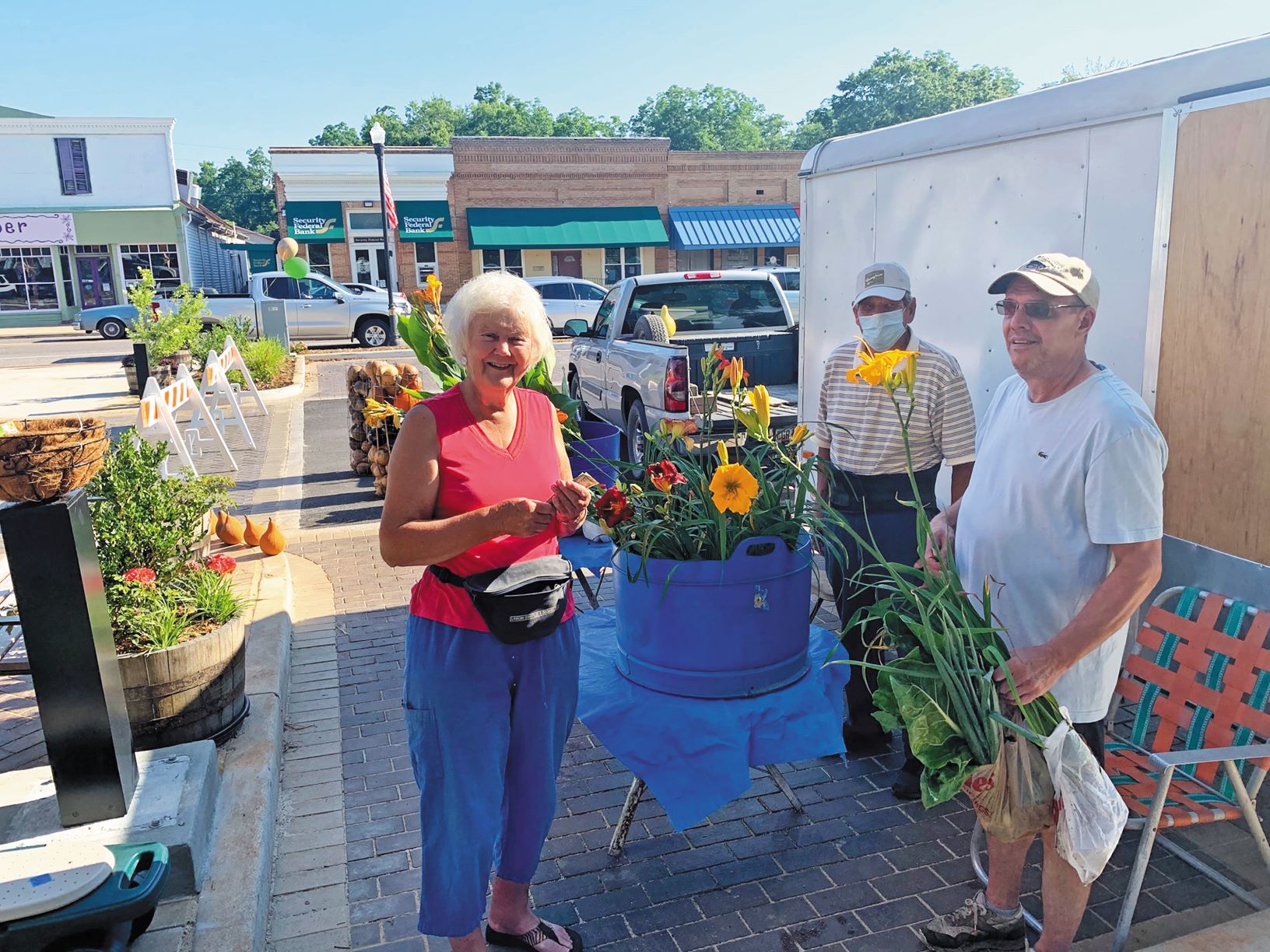
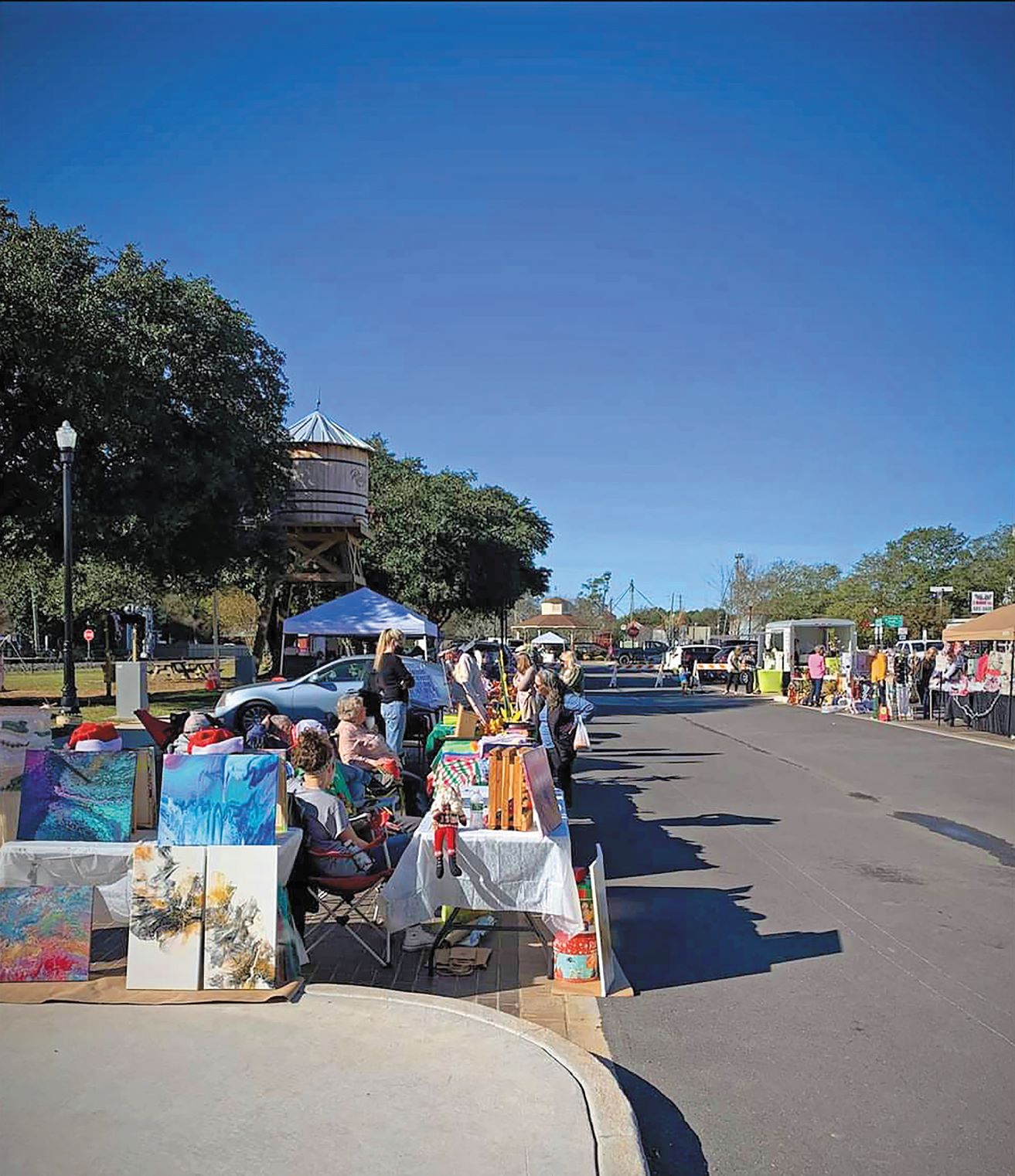
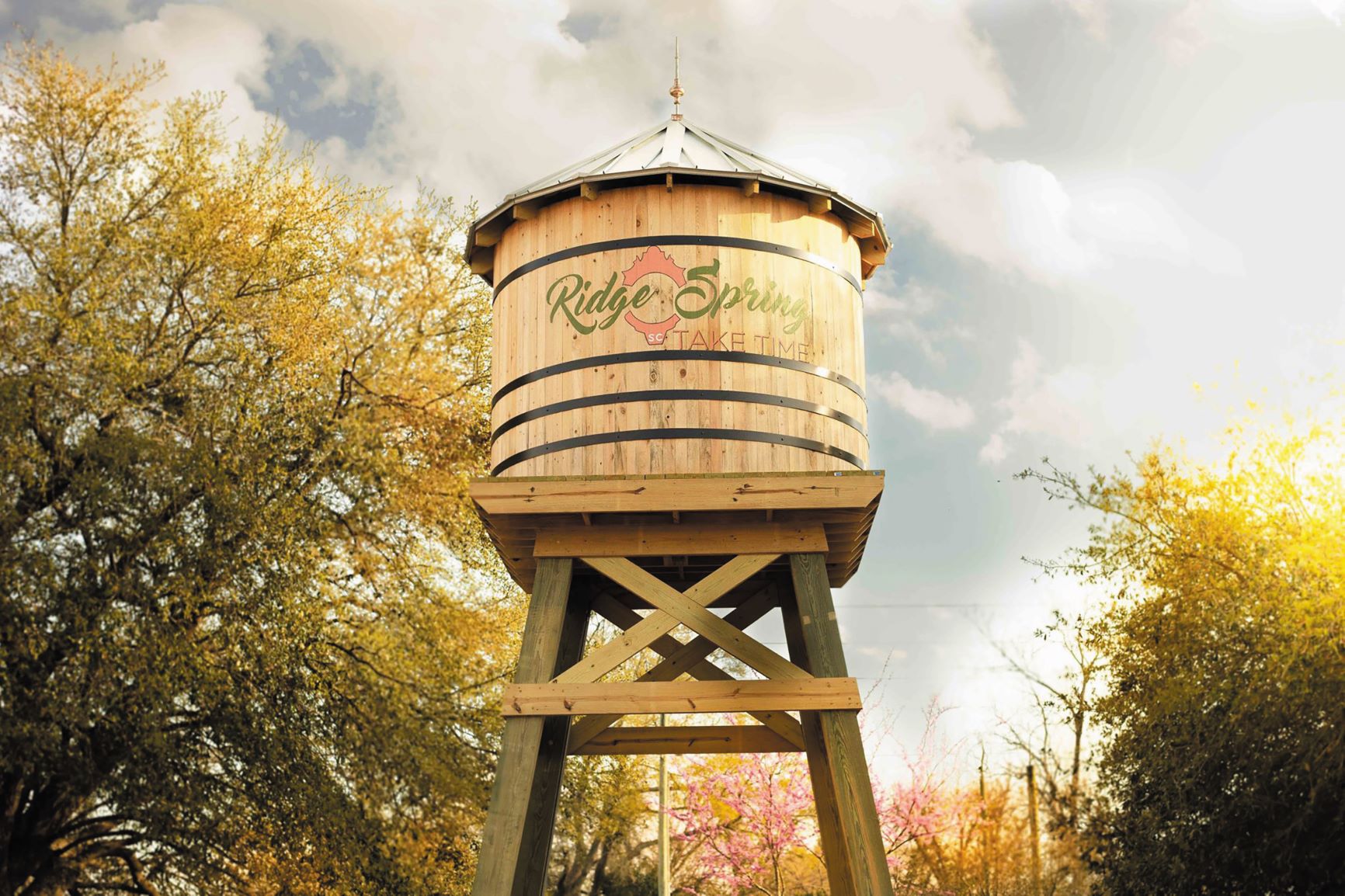
The Town of Ridge Spring made their downtown more attractive and accessible by adding parking, improving streetscapes and enhancing the farmers market. The downtown now features a replica of a water tank that was used in the early days of Ridge Spring, when it was used in part to provide water for steam engines stopping in the railroad town. Photos: Town of Ridge Spring.
“We’re growing in the way little towns grow. But we didn’t have parking,” she said. “When you’d come in on a Friday afternoon or a Saturday, there was not a place to park. That was a good thing, but we had to figure out how to use an old parking lot and an old garden to make room for more.”
The town took over a property that had been leased to a garden club for more than 30 years, rearranged the plantings and added more parking. It also enhanced its farmers market by adding parking and restrooms. By the end, it had added 30 parking spaces, improved the streetscape, enhanced the farmers market and made the downtown more attractive.
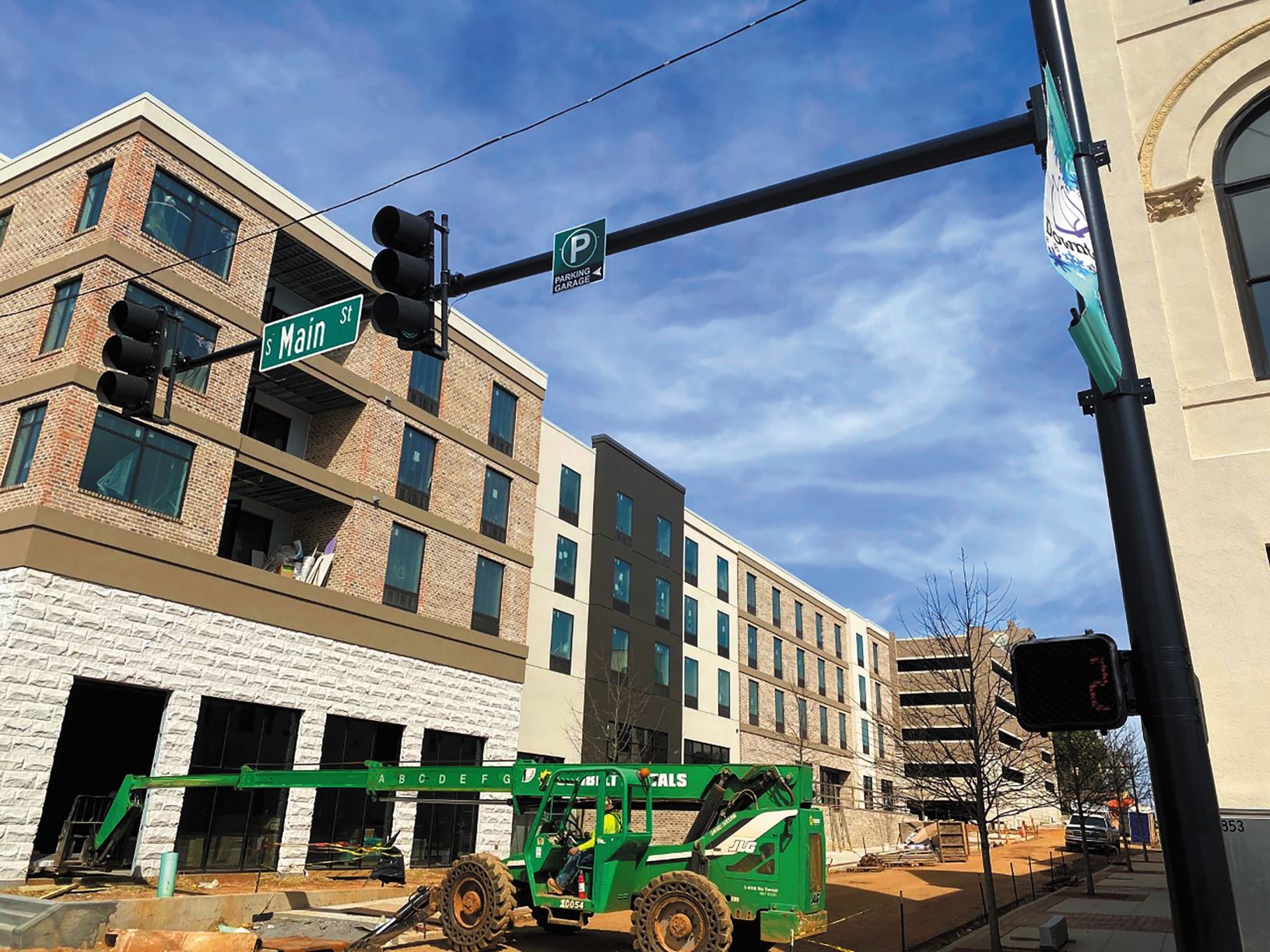
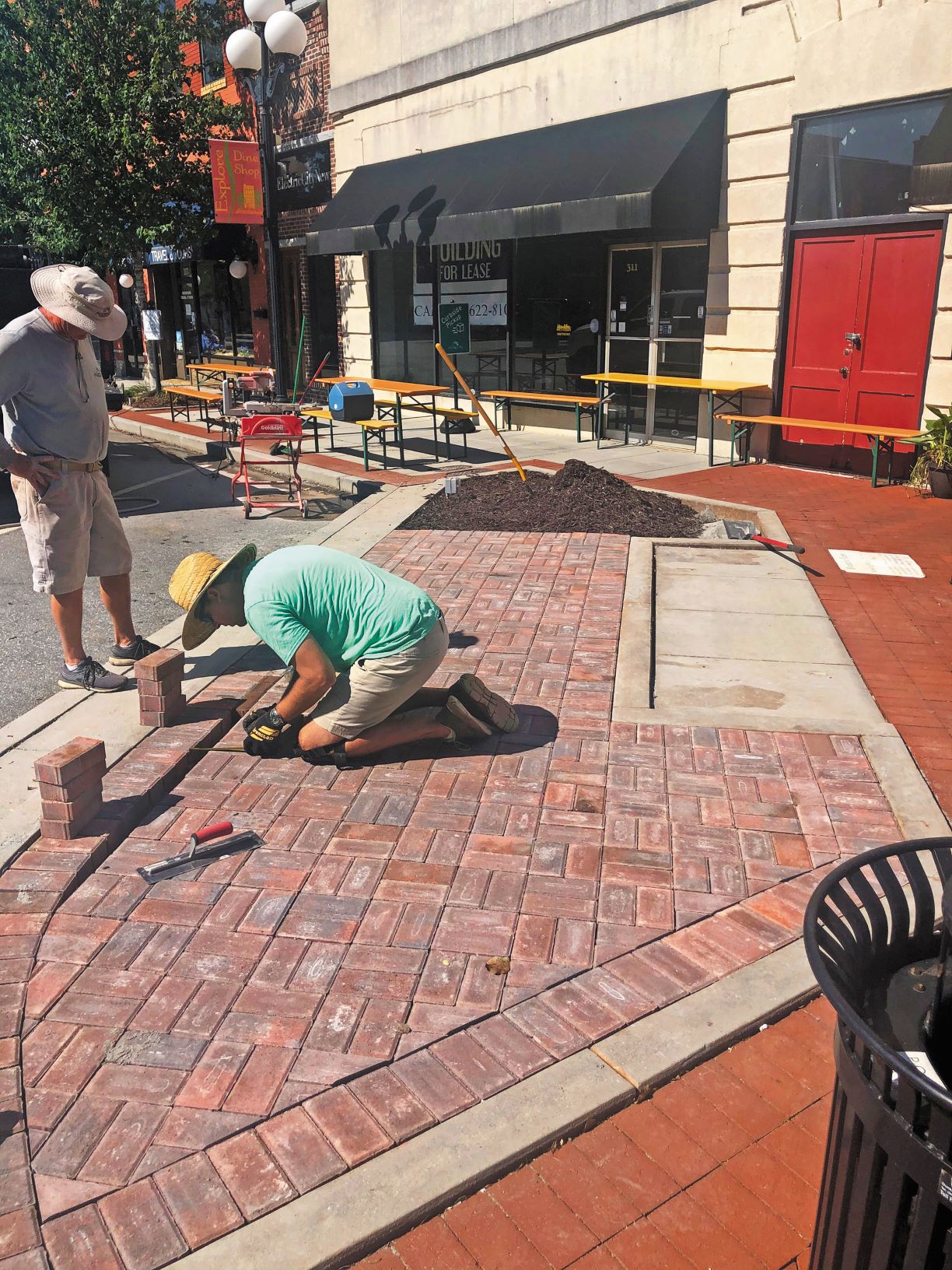
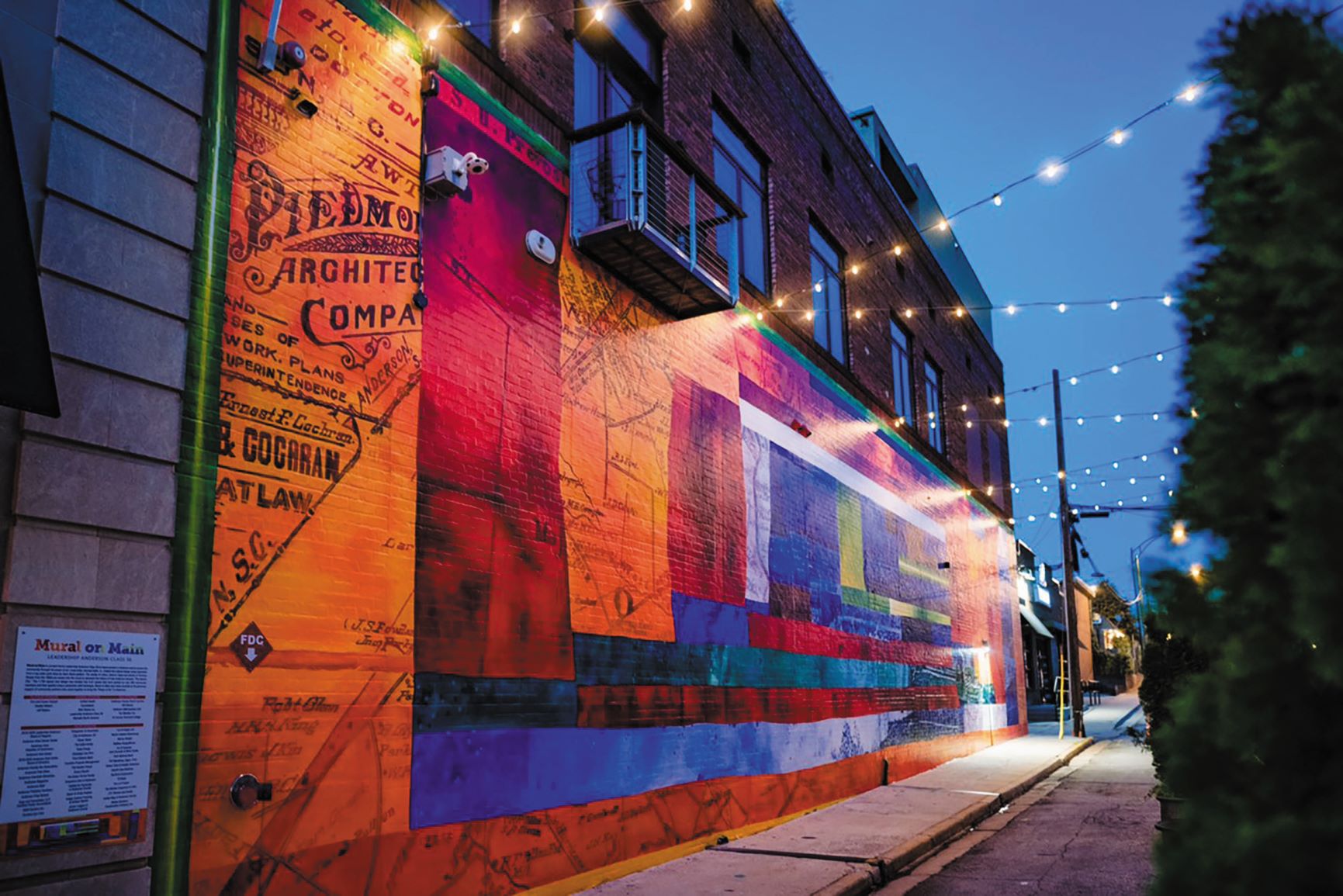
“But we really wanted something that would attract people’s attention,” she said.
That has come in the form of a decorative wooden water tower, a focal point in the town park. It’s a replica of a water tank that was used in the early days of Ridge Spring, when it was used in part to provide water for steam engines stopping in the railroad town.
“It’s absolutely the nicest water tank. We’ve had a wedding under it already. People come and take lots and lots of pictures. We’re very proud of what we’ve done in the past two years,” she said.
“It’s absolutely the nicest water tank. We’ve had a wedding under it already. People come and take lots and lots of pictures. We’re very proud of what we’ve done in the past two years,” she said.
The City of Anderson is also proud of the success that has come following years of work to make the downtown area attractive to residents and visitors.
“Right now, we are seeing the fruits of a couple of decades of infrastructure and streetscape improvements,” City Manager David McCuen said. “We realize that we are not ‘in the business of business,’ but it is our role to create an environment attractive to business.”
He said the city was particularly proud to see 12 new businesses open downtown in 2020, despite the economic challenges brought on by the coronavirus pandemic.



The City of Anderson is experiencing success after years of careful planning and infrastructure improvements. The city uses data from growth studies and input from residents to help guide projects. Photos: City of Anderson.
“This speaks to the fact that we focused on a quality foundation on several fronts. A parking study revealed that our growth patterns could support a second parking garage. This data helped us as we partnered with developers to plan a new hotel, fronting Main Street, and an adjacent 305-space garage,” McCuen said.
The city also improved its downtown landscaping.
“We weren’t afraid to chop things down and dig things up, editing our landscaping to provide shade and aesthetic appeal. We added a horticulturalist to our staff to ensure the health of our trees and to care for a stunning array of seasonal plantings,” he said. “This has added a layer of organic vibrancy to complement our notable array of public art.”
The city also asked residents, visitors and businesses how they perceived Anderson’s downtown, and used the information to address lighting and general cleanliness issues.
“We moved and added benches and trash receptacles to serviceable positions,” he said. “Though these things might seem small, we realized they were very important to the overall curb appeal of the city.”
As a new hotel opens this summer, McCuen said the surrounding block will get a major facelift with a shady street to flank the new development. His advice for other cities and towns: plan, but be flexible.
“We had solid streetscape plans and we have revised and updated them over the years. We are always willing to partner with developers to meet their needs where we can and work within our shared goals. And most importantly, be willing to make the financial investment. It will pay off.”
Greer’s Danner also points out the importance of leadership when cities undertake major — or minor — streetscaping or other plans.
“[The CenterG project] made me realize it’s not always just about solutions; it’s about leadership,” Danner said. “We had lots of solutions to do what we wanted to do. It was that leadership by our council and our staff that gave our community and merchants the confidence to say, ‘If you think you can pull this off, we’re willing to take the risk.’”
